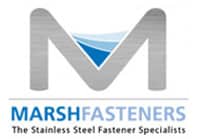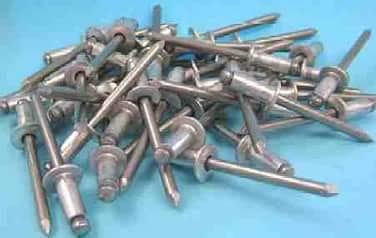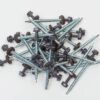Last Updated on October 17, 2022 by Marsh Fasteners
Many people mistakenly believe that all stainless steel is the same. This is not true. The type and grade of stainless steel fasteners that you invest in will determine just how corrosion resistant they are and, of course, how durable and long-lasting you can expect them to be. Whether you are buying nuts, bolts, nails and screws, rivets and pins or anchoring systems, you must take the environment into consideration.
Professionals must know what the difference is between 18-8 vs. 304 vs. 316-grade stainless steel. We’re going to help simplify it for you. Here’s what you need to know about each of these three different grades:
18-8 Grade Stainless Steel
This refers to the 300 series of stainless steel with a chromium and nickel content in percentages. That means that an 18-8 grade fastener has 18% chromium and 8% nickel content. 18-8 type stainless steel has better resistance to corrosion than the 400 series. It can be hardened only by cold working, and it isn’t magnetic.
Pros and Cons of 18-8 Grade Stainless Steel
As already mentioned, 18-8 grade stainless steel is celebrated for its superior corrosion resistance. However, it is known to show signs of corrosion when exposed to chlorides, such as salt. Therefore, it is not the ideal stainless steel to use for marine applications. On the up side, 18-8 grade stainless steel properties include the fact that it can be bent and molded without it having an effect on its overall strength and durability. This type of stainless steel is also not only extremely budget-friendly, but it also requires little to no maintenance. 18-8 stainless steel yield strength is also impressive.
Application of 18-8 Grade Stainless Steel
18-8 grade stainless steel is utilized within a number of different industries, including the wastewater treatment, restaurant and catering, medical, and transportation industries. It is not suitable for marine applications.
304 Stainless Steel
This is a basic alloy. It cannot be heat hardened and is also non-magnetic. While this grade of stainless steel won’t rust, it will tarnish. It also has a strong resistance to the effect of various chemicals and acids.
Pros and Cons of 304 Stainless Steel
The main benefit is that 304 stainless steel is usually considered to be one of the strongest of the mild steels available on the market. It boasts a respectable level of resistance to corrosion, and is much easier to mold than its 316 stainless steel alternative. However, like 18-8 grade stainless steel it is vulnerable to corrosion when exposed to salt water.
Application of 304 Stainless Steel
304 stainless steel is commonly used in the manufacture of various items including sinks, pots, pans, tables, and the like. As such, 304 stainless steel is very often used in the dairy, food, and brewing industries.
316 Stainless Steel
This product offers high tensile strength. It has a corrosion resistance that can withstand harsh environments. It is also non-magnetic and must be hardened through cold working. The difference between type 304 and 316 stainless steel is the incorporation of molybdenum of up to 3%. This grade of stainless steel is commonly used in the surgical industry, paper pulp industry as well as in the production of dyes and chemicals.
Pros and Cons of 316 Stainless Steel
316 stainless steel boasts a higher strength and durability than 304 stainless steel. It also has a higher level of corrosion resistance, including when exposed to salt water. It performs well against pitting and is also resistant to caustic chemicals. As mentioned above, however, 316 stainless steel is less malleable than 304 stainless steel. It is also substantially more expensive.
Application of 316 Stainless Steel
Due to its higher level of corrosion resistance, especially in terms of salt water, 316 stainless steel is unsurprisingly used most frequently for marine applications. It is also often used in the manufacture of chemical processing equipment, as well as various heat exchangers and furnace parts.
Find All the Fasteners You Need at Marsh Fasteners
Choosing the correct grade of stainless steel is essential to ensuring that your product is of the right quality and that no damage is experienced along the way. Now that you know the difference between 18-8 vs 304 vs 316-grade stainless steel, you can make a better choice for your application in terms of fasteners. Contact us via email or telephone for more information and advice on our stainless steel fasteners at Marsh Fasteners today.








